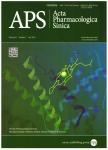版权所有:内蒙古大学图书馆 技术提供:维普资讯• 智图
内蒙古自治区呼和浩特市赛罕区大学西街235号 邮编: 010021

作者机构:Tianjin State Key Laboratory of Modern Chinese Medicine Tianjin University of Traditional Chinese Medicine Tianjin 300193China MOE Key Lab of Bioinformatics Bioinformatics Division TNLIST and Department of Automation Tsinghua University Beijing 100084 China MOE Key Lab of Bioinformatics Bioinformatics Division TNLIST and Department of Automation Tsinghua University Beijing 100084 China Tianjin State Key Laboratory of Modern Chinese Medicine Tianjin University of Traditional Chinese Medicine Tianjin 300193China The Second Hospital Affiliated to Tianjin University of Traditional Chinese Medicine Tianjin 300150 China Tianjin International Joint Academy of Biotechnology & Medicine Tianjin 300457 China
出 版 物:《中国药理学报(英文版)》 (Acta Pharmacologica Sinica)
年 卷 期:2016年第37卷第7期
页 面:963-972页
核心收录:
学科分类:1002[医学-临床医学] 100214[医学-肿瘤学] 10[医学]
基 金:This work was supported by the National Natural Science Foundation of China (№ 81225025 81303139 and 91229201)
主 题:nuciferine TCM network pharmacology anti-tumor agent neuroblastoma colorectal cancer PI3K-AKT IL-1 drugCIPHER
摘 要:Aim: Nuciferine is an aporphine alkaloid extracted from lotus leaves, which is a raw material in Chinese medicinal herb for weight loss. In this study we used a network pharmacology approach to identify the anti-tumor activity of nuciferine and the underlying ***: The pharmacological activities and mechanisms of nuciferine were identified through target profile prediction, clustering analysis and functional enrichment analysis using our traditional Chinese medicine (TCM) network pharmacology platform. The anti-tumor activity of nuciferine was validated by in vitro and in vivo experiments. The anti-tumor mechanisms of nuciferine were predicted through network target analysis and verified by in vitro ***: The nuciferine target profile was enriched with signaling pathways and biological functions, including “regulation of lipase activity, “response to nicotine and “regulation of cell proliferation. Target profile clustering results suggested that nuciferine to exert anti-tumor effect. In experimental validation, nuciferine (0.8 mg/mL) markedly inhibited the viability of human neuroblastoma SY5Y cells and mouse colorectal cancer CT26 cells in vitro, and nuciferine (0.05 mg/mL) significantly suppressed the invasion of 6 cancer cell lines in vitro. Intraperitoneal injection of nuciferine (9.5 mg/mL, ip, 3 times a week for 3 weeks) significantly decreased the weight of SY5Y and CT26 tumor xenografts in nude mice. Network target analysis and experimental validation in SY5Y and CT26 cells showed that the anti-tumor effect of nuciferine was mediated through inhibiting the PI3K-AKT signaling pathway and IL-1 levels in SY5Y and CT26 ***: By using a TCM network pharmacology method, nuciferine is identified as an anti-tumor agent against human neuroblastoma and mouse colorectal cancer in vitro and in vivo, through inhibiting the PI3K-AKT signaling pathways and IL-1 levels.